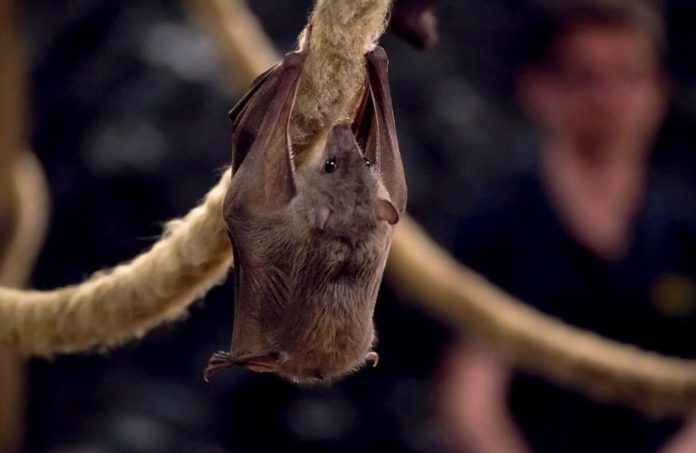Researchers have discovered the first known SARS-related coronavirus in a lesser horseshoe bat, as well as the first in the United Kingdom.
New research from the University of East Anglia, ZSL (Zoological Society of London), and Public Health England(PHE) has detected a coronavirus related to the virus that causes COVID-19 in people in UK horseshoe bats.
This new virus, however, has not yet infected humans, and there is no evidence that it will in the future unless it mutates.
University of East Anglia researchers gathered fecal samples from more than 50 lesser horseshoe bats and forwarded them to Public Health England for virus analysis.
In one of the bat samples, the team discovered a new coronavirus, which they have called “RhGB01.”
This research has not yet been peer reviewed due to its rapid reaction nature.
It’s the first time a sarbecovirus (SARS-related coronavirus) has been discovered in a lesser horseshoe bat, and it’s also the first time it’s been found in the United Kingdom.
According to the researchers, these bats have almost certainly been carrying the virus for a long time. Because this is the first time they’ve been tested, it’s been discovered now.
Importantly, until it mutates, this unique virus is unlikely to represent a direct threat to people.
A mutation could occur if a human infected with COVID-19 passes it on to an infected bat, thus anyone who comes into touch with bats or their droppings, such as cavers or bat guards, should wear adequate PPE.
“Horseshoe bats are found across Europe, Africa, Asia and Australia and the bats we tested lie at the western extreme of their range,” said Prof Diana Bell of the University of East Anglia’s School of Biological Sciences.
“Our research extends both the geographic and species ranges of these types of viruses and suggests their more widespread presence across more than 90 species of horseshoe bats.
“These bats will almost certainly have harbored this virus for a very long time—probably many thousands of years. We didn’t know about it before because this is the first time that such tests have been carried out in UK bats.”
“Research into the origins of SARS-CoV-2, the virus that causes COVID-19 in humans, has focussed on horseshoe bats—but there are some 1,400 other bat species and they comprise 20 percent of known mammals.
“Our findings highlight the need for robust genotype testing for these types of viruses in bat populations around the world. And it raises an important question about what other animals carry these types of viruses.”
“Our findings highlight that the natural distribution of sarbecoviruses and opportunities for recombination through intermediate host co-infection have been underestimated,” stated Prof Andrew Cunningham of the Zoological Society of London.
“This UK virus is not a threat to humans because the receptor binding domain (RBD) – the part of the virus that attaches to host cells to infect them—is not compatible with being able to infect human cells.
“But the problem is that any bat harboring a SARS-like coronavirus can act as a melting pot for virus mutation. So if a bat with the RhGB01 infection we found were to become infected with SARS-CoV-2, there is a risk that these viruses would hybridize and a new virus emerge with the RBD of SARS-CoV-2, and so be able to infect people.
“Preventing transmission of SARS-CoV-2 from humans to bats, and hence reducing opportunities for virus mutation, is critical with the current global mass vaccination campaign against this virus.”
Prof Bell added: “The main risks would be for example a bat rehabilitator looking after a rescued animal and infecting it with SARS-CoV2—which would provide an opportunity for genetic recombination if it is already carrying another sarbecovirus.
“Anyone coming into contact with bats or their droppings, such as bat rescuers or cavers, should wear appropriate PPE—in order to reduce the risk of a mutation occurring.
“We need to apply stringent regulations globally for anyone handling bats and other wild animals,” she added.
The new virus belongs to the sarbecoviruses subgroup of coronaviruses, which includes both SARS-CoV-2 (which caused the current pandemic) and SARS-CoV-1 (responsible for the initial 2003 SARS outbreak in humans).
Further research compared the virus to those found in other horseshoe bat species in China, Southeast Asia, and Europe, revealing that its closest related was discovered in a Bulgarian Blasius’s bat in 2008.
Source: DOI: 10.21203/rs.3.rs-358285/v1
Image Credit: iStock
You were reading: New coronavirus found in British bats may put humans at risk if mutates
